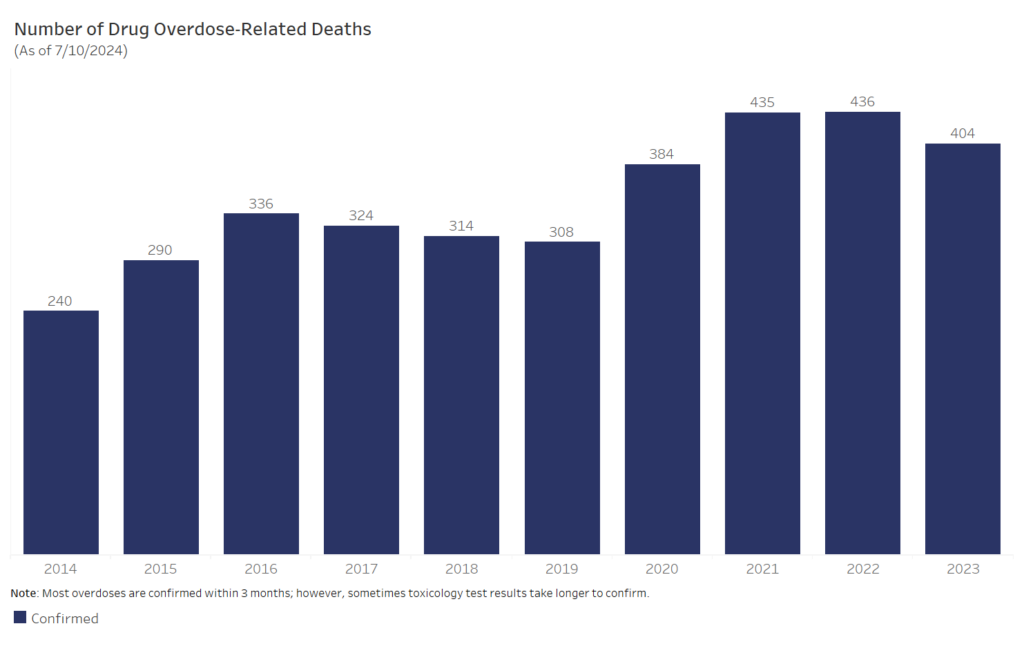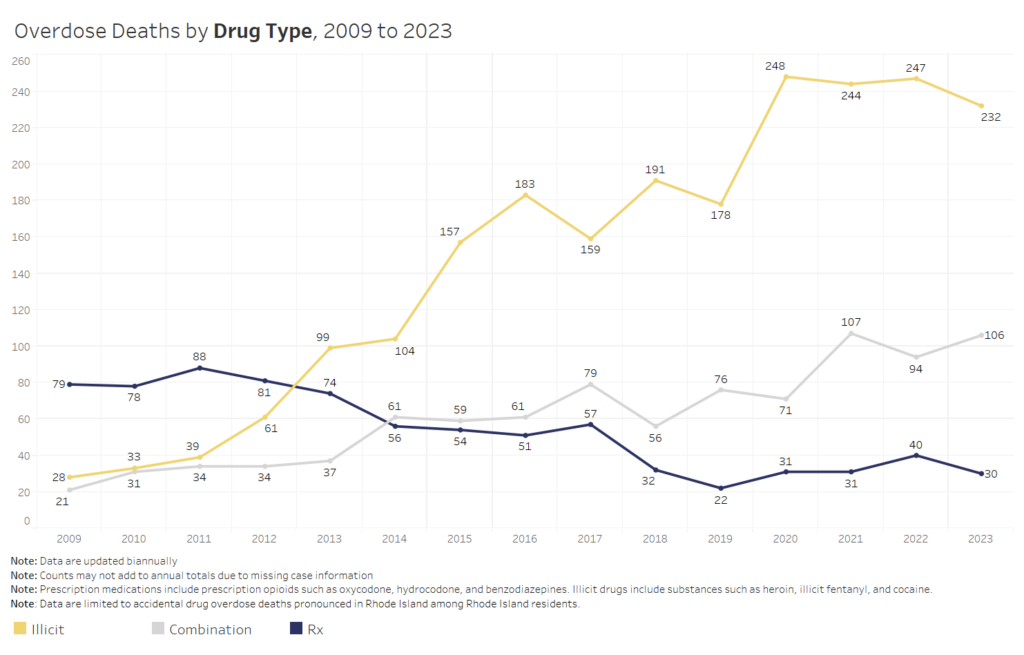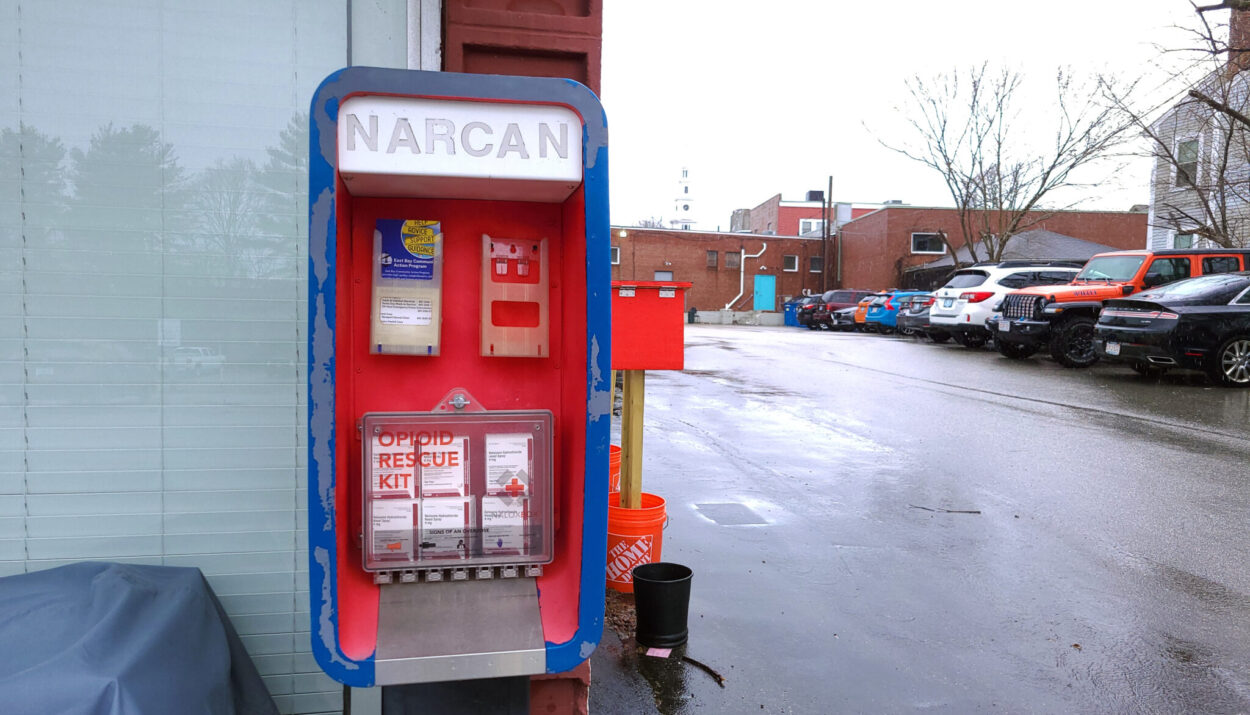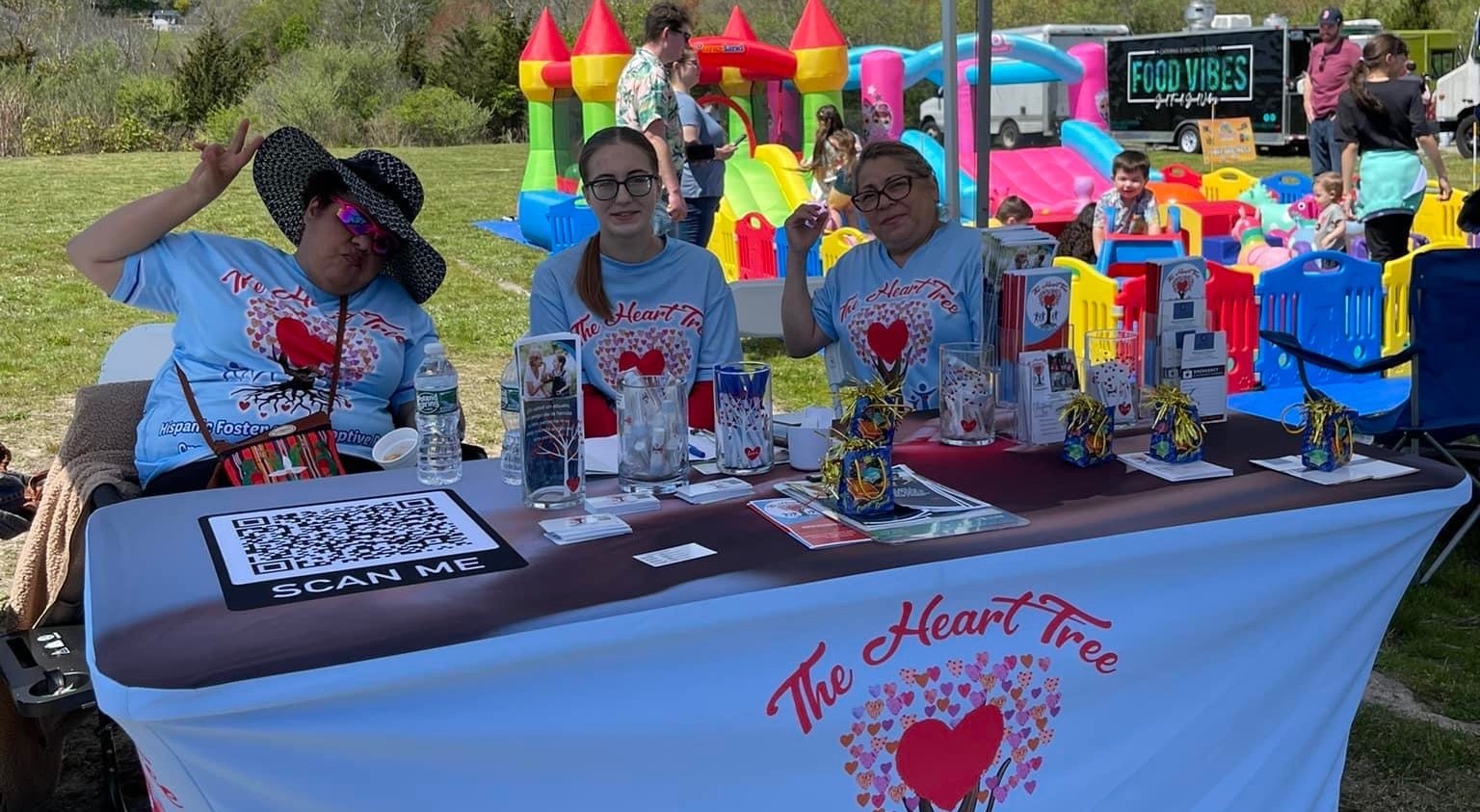But despite modest progress, Black and Hispanic residents still lack access to treatment
This story was originally published in Rhode Island Current, a publication partner of Ocean State Stories.
PROVIDENCE — Fresh off the deadliest year for accidental drug overdoses in the last decade, Rhode Island saw its first glimmer of hope in 2023 numbers for drug-induced fatalities published last week.
The 404 residents who died from accidental drug overdoses in 2023 marks a 7.3% decline over 2022, and the first year-over-year reduction in fatal overdoses in four years, according to the new data.
“The needle is moving in the right direction, but we must continue to build upon our multi-faceted approach to save lives because we know that addiction is a disease and recovery is possible,” Richard Leclerc, director of the Rhode Island Department Of Behavioral Healthcare, Developmental Disabilities and Hospitals (BHDDH) and co-chair of the Governor’s Overdose Prevention and Intervention Task Force, said in a statement.
The 32-person task force last year adopted an action plan that included cutting overdose deaths from the 2022 numbers by 30% by 2030, with an incremental milestone of 12% less by 2025. The 404 deaths in 2023 is “significantly below” the projected 417 fatalities for the year, suggesting that if the same downward trend continues, the state is on track to meet upcoming benchmarks, according to the health department.

But the milestone was hardly cause for celebration among members of the group charged with preventing overdoses and increasing education and treatment for substance abuse. Instead, they adopted a somber tone as they reviewed the latest statistics at a virtual meeting Wednesday.
“We could do better,” Thomas Joyce, task force co-chair, said. “Everyone deserves better.”
Particularly concerning for panel appointees and first responders was the disproportionate percentage of Black and Hispanic residents who continue to die from accidental overdoses and are less likely to seek or find treatment beforehand.
Black residents had the highest rate of fatal overdoses relative to their population, with 47.9 fatalities per 100,000 people in 2023. That’s an 11% decline over the prior year, but still significantly higher than fatality rates among white and Hispanic residents. The rate of overdoses among Hispanic and Latino residents increased nearly 50% from 2021 to 2022, however.
Even more startling was the lack of treatment — past or current — among minorities compared to white counterparts. While 72% of the 404 people who died from an overdose in 2023 had never received treatment for substance abuse, the percentage rose to 84% among Black residents, and 74% among Hispanic or Latino residents. Less than 5% of the people who died while in treatment were Black, compared with 19% of non-Hispanic, white fatalities.
The municipalities with the highest rates of fatal drug overdoses — Woonsocket, followed by Providence — also include a disproportionate percentage of Black and Hispanic residents, according to the data.
“We need to be very strategic about targeting the populations that are being hit more severely by this epidemic,” said Corinna Roy, associate director for the division of behavioral healthcare at BHDDH.
Not that strategy has been left by the wayside. In recent years, government agencies and community partners have worked to increase education, awareness and treatment while removing barriers that prevent access. That includes a targeted text message campaign in overdose hotspots warning of risks of fentanyl contamination and offering access to free, mail-order naloxone and naloxone training.
Opioids, and specifically the illegal synthetic known as fentanyl, continue to reign as the primary cause of overdose deaths, detected through toxicology tests with the Rhode Island Office of State Medical Examiners and state health lab in three out of four fatalities that occurred in 2023. But the blame hardly lies with illicit opiates alone; nearly two-thirds of deaths in 2023 involved a combination of prescription and illicit drugs.

Combinations of illegal and prescription drugs are detected in a majority of fatal drug overdoses in Rhode Island. (Rhode Island Department of Health)
While the toxicology and autopsy reports offer insight into the kinds of deadly cocktails involved, the data fails to capture whether users were knowingly combining different substances, or inadvertently using an illicit substance that was laced with something else, said Heidi Weidele, the health department’s fatal overdose epidemiologist.
The prevalence of drug contamination also suggests that at least in some cases, overdoses are unrelated to addiction or substance abuse. Stacey Levin, director of recovery housing for nonprofit RICARES, shared anecdotal evidence that many of the people who overdose are not intentional opioid users.
“The drug supply is so contaminated,” she said, adding that for that demographic, medication-assisted treatment is not the solution.
Yet for the many who suffer from opioid use disorder, FDA-approved medications like buprenorphine, methadone, and naltrexone are the “gold standard” for treatment. Despite strong research suggesting their effectiveness, stigma prevents people with opioid use disorder from considering them, much to the frustration of Linda Mahoney.
Mahoney, BHDDH’s program administrator of behavioral health and substance use conditions, teared up as she shared news that a client she was working with had just died, after refusing to take Mahoney up on the suggestion to try medication-assisted treatment.
“The constant comment I received is, ‘It didn’t work for my friend so it won’t work for me,’’ Mahoney said. “We have so much stigma about medication-assisted treatment out there. It’s ridiculous.”
Ending stigma around drug use in favor of safety was also the inspiration behind Rhode Island’s first-in-the-nation, state-regulated overdose prevention center. Following approval by lawmakers in 2021, the state has partnered with community and clinical partners to open a dedicated location where people can use illicit drugs under supervision, with access to clean syringes and education and treatment resources. The center at 45 Willard Avenue in Providence is expected to open this summer.
“We have many new interventions in place to respond to the dynamic nature of this crisis,” Gov. Dan McKee said in a statement. “We have to keep innovating and collaborating with our partners in the community to continue preventing overdoses. My heart breaks for each and every person who has lost a loved one to this epidemic. We owe it to the Rhode Islanders who have passed, and to their families, to do everything possible to prevent any additional overdose deaths.”
Anyone in immediate danger should call 911.
For more information about local treatment, recovery and harm reduction offerings, visit PreventOverdoseRI.org.
For immediate emergency assistance, call or text 988 or visit 988lifeline.org to connect with a trained crisis counselor through the 988 Suicide & Crisis Lifeline.
Other resources:
● BHLink: For confidential support and to get connected to care, call (401) 414-LINK (5465) or visit the BHLink 24-hour/7-day triage center at 975 Waterman Ave., East Providence. Website: bhlink.org
● The Samaritans of Rhode Island: (401) 272-4044 or (800) 365-4044. Website: samaritansri.org
● The Crisis Text Line: Text HOME to 741741 “from anywhere in the USA, anytime, about any type of crisis.”






